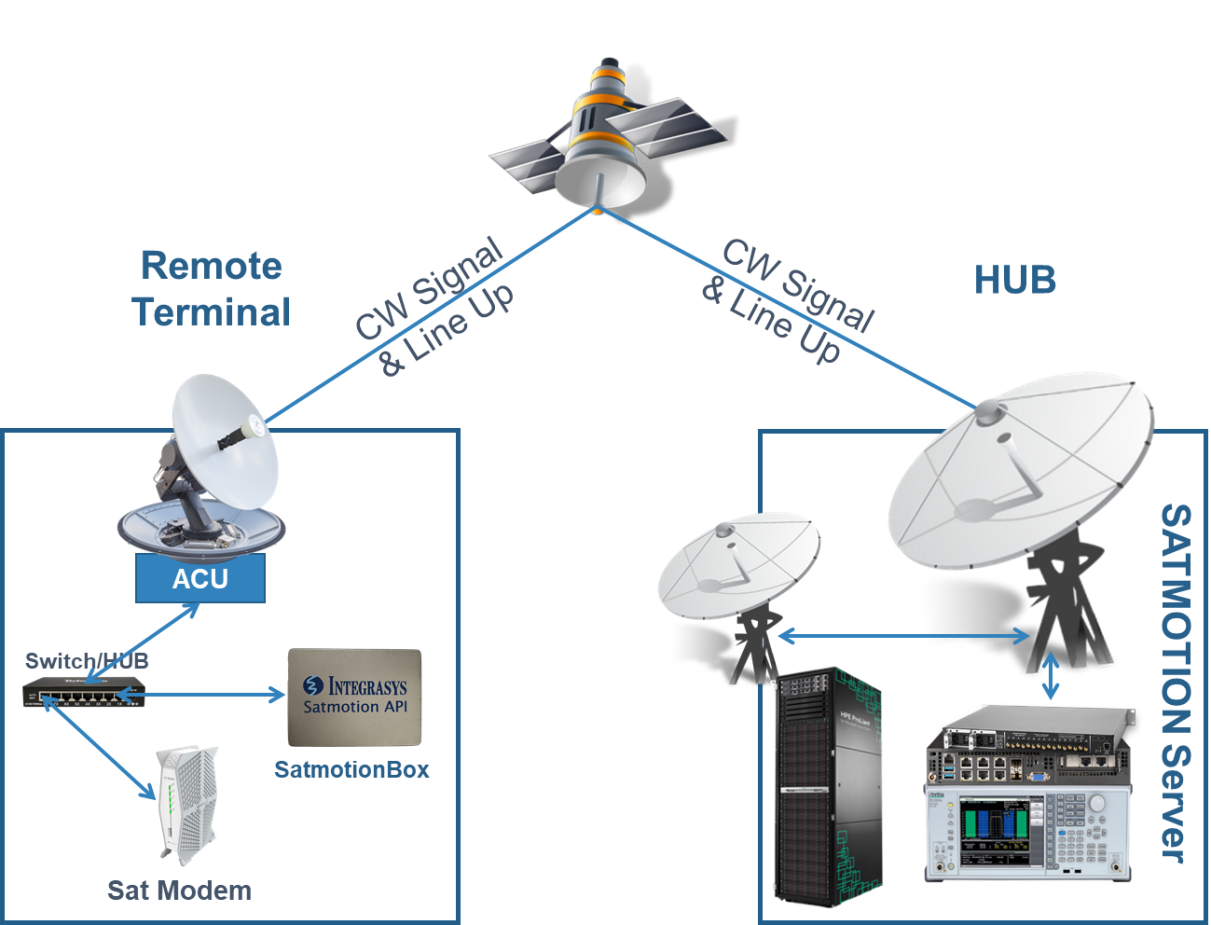PAGE CONTENTS
Objectives

MOBISAT stems from the need of satellite operator to develop and validate a “service” for fully automating the commissioning of services in Satcom on-the-move mechanical terminals (SOTM) without human intervention, addressing optimal radiofrequency (RF) performance, required by the Network Operations Center (NOC), minimizing interferences and power management. Moreover, the solution provides the capacity to the satellite operator to recover of remote antennas in many cases, removing the need for installers to revisit the site, in many cases in isolate areas as rural, jungles, dessert, high sea or even conflicting regions.
This solution will improve the Satcom services usage in terms of cost efficiency and complexity for deployment and maintenance. The foundations of MOBISAT are:
-
Measurement of end-to-end Cross-Polarization interference.
-
Remote Terminal is aware of optimal RF parameter for the network.
-
Optimal transmission Power should be assessed and configured (fine tuning of LNB feed).
-
Reporting to the NOC the configured parameters.
-
To assess and automatically configure the parameters of the terminal for optimal transmission and alignment.
-
Multiple geographically distributed commissioning simultaneously.
-
Scheduling automated maintenance of terminals.
Challenges
The optimal pointing of antennas is a complex process: It is needed to ensure terminal is not creating any interference in other frequencies, neither in the Cross Polarization nor other satellites. Also, the optimal transmission power has to be configured, to enable maximum connectivity, optimal energy usage. RF optimization is even more relevant in New Space, when more satellites will be sharing the spectrum and space. MOBISAT faces challenges as synchronized end to end RF measurements, interoperability among vendors, remote recovery or optimization of terminals avoiding visit of technician, antenna control based on RF measurements.
System Architecture
The MOBISAT solution involves developing two main elements:
-
At remote VSAT side – To implement application into a mini-computer (named “SatmotionBox”) on the remote side that interfaces with the Antenna Control Unit (ACU) and SatCom modem, and…
-
At NOC side – To adapt current solution in the server side (named Satmotion Server, since it comes from a previous solution of Integrasys) at NOC/Teleport place in order to interface with Network Management system (NMS) and measurement instrumentation.
In the architecture we identify the following external interfaces of the solution:
-
SatmotionBox – ACU: This interface enables the control of the antenna by MOBISAT to set the optimal mechanical setup of the antenna.
-
SatmotionBox – Satcom modem: This interface enables the control of the SatCom modem by MOBISAT to set-up the RF parameters that are found as optimal. It also enables a communication channel between NOC and SatmotionBox.
-
Satmotion Server – Measurement equipment: The server side of MOBISAT has access to spectrum analyser and switch matrix to perform the proper measurements and algorithms.
-
Satmotion Server – Network Management System: The server side of MOBISAT has access to configure the proper information that enables the communication among remote and NOC.
Plan
MOBISAT is broken down in 4 WPs that cover the management, design, the technical development and validation. The methodology follows a user and market driven approach, whereas the development is based on the previous technical feasibility studies done by our company and prototype done by the company
WP1, Project Management (M1-M12)
WP2, Full design and validation plan (M1-M4)
WP3 Implementation (M4-M10)
WP4 Integration and validation (M10-M12)
Current Status
This activity has concluded. The product has been validated in controlled pre-operational scenario, including commercial terminal, real hub and communication satellite. It has been demonstrated the ability of MOBISAT to fully automate the commissioning of Satcom on-the-move mechanical terminals and the feature of remote maintenance of misconfigured antennas. Moreover, it has been positively assessed how Flat Panel Terminals and NGSO constellation can also be a target market for MOBISAT.

